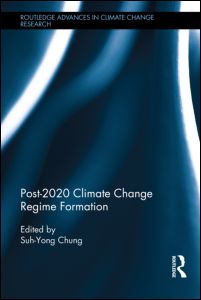
24 July 2013: The UNFCCC Secretariat has published the reviews of the individual annual submissions of Finland, Slovenia, Japan and the UK.
In the report of Finland's Individual Annual Submission Review (FCCC/ARR/2012/FIN), the Expert Review Team (ERT) concludes that Finland's inventory submission was prepared in accordance with the UNFCCC reporting guidelines; and that the National Inventory Report (NIR) and the set of Common Reporting Format (CRF) tables for the years 1990-2010 are complete in terms of geographical coverage, years and sectors, as well as generally complete in terms of categories and gases. The ERT also provides cross-cutting and sector-specific recommendations for improvement.
In the report of Slovenia's Individual Annual Submission Review (FCCC/ARR/2012/SVN) the ERT concludes that its submission was prepared and reported in accordance with the UNFCCC reporting guidelines and that the set of CRF tables for the years 1986-2010 and the NIR submitted are complete in terms of geographical coverage, years and sectors, as well as complete in terms of categories and gases. However, the ERT notes some gaps in the reporting, including that Slovenia did not estimate the carbon stock changes in litter and mineral soils on areas under forest management for land use, land-use change and forestry (LULUCF) activities under the Kyoto Protocol. ERT's recommendations include improving the information on the inventory preparation and reporting processes, as well as ensuring time-series consistency for all categories of gases.
In the report of Japan's Individual Annual Submission Review (FCCC/ARR/2012/JPN), the ERT indicates that Japan's submission was prepared in accordance with the UNFCCC reporting guidelines, and that the NIR and set of CRF tables for 1990-2010 were complete in terms of geographical coverage, years, gases and sectors, and generally complete in terms of categories. The ERT provides, among others, cross-cutting recommendations concerning completeness and transparency of information on fluorinated gases.
In the report of UK's Individual Annual Submission Review (FCCC/ARR/2012/GBR), the ERT concludes that UK's submission was prepared in accordance with the UNFCCC reporting guidelines and that the NIR and set of CRF tables for 1990-2010 are generally complete in terms of geographical coverage, and complete in terms of years, sectors, categories and gases. The ERT indicates that for some categories in the energy, agriculture and waste sectors there are still some gaps in the reporting of emissions. Among other things, the ERT recommends that the UK provide additional information on the inventory improvement programme, for example, regarding priority setting.



 24 July 2013: The UNFCCC Secretariat has published the reviews of the individual annual submissions of Finland, Slovenia, Japan and the UK.
24 July 2013: The UNFCCC Secretariat has published the reviews of the individual annual submissions of Finland, Slovenia, Japan and the UK. 15 July 2013: The UNFCCC Secretariat has published the review of the individual annual submission of Portugal and the Czech Republic, as well as a synthesis report on 2013 greenhouse gas (GHG) inventories.
15 July 2013: The UNFCCC Secretariat has published the review of the individual annual submission of Portugal and the Czech Republic, as well as a synthesis report on 2013 greenhouse gas (GHG) inventories.




 Agreed outcome pursuant to the Bali Action Plan
Agreed outcome pursuant to the Bali Action Plan





